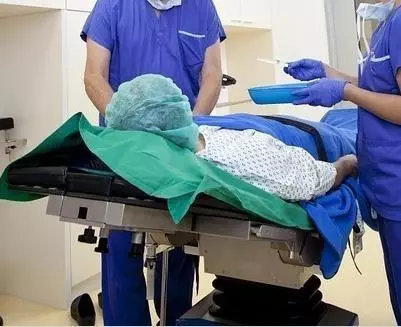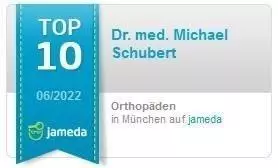Revolutionary endoscopic disc surgery
Thanks to research and further development in the Apex-Spine Spine Center:
The minimally invasive, endoscopic disc surgery has been revolutionized and is considered one of the most advanced spine surgeries
The minimally invasive surgical technique has made a quantum leap through the technical advancement of endoscopic instruments. In the field of technology, manufacturers offer tokars with a diameter of just a few millimeters. These guide sleeves for various surgical instruments such as light sources, cameras, forceps and burs require very little space to guide them to the location of the problem.
In addition, there are new, high-resolution imaging methods that show the surgeon a 3D image in full HD quality from the inside of the body, enlarged up to 10 times, in real time on a control monitor. This enables the surgeon to have natural, three-dimensional vision and thus optimal hand-eye coordination. The advantage for the surgeon lies in the prevention of signs of fatigue and in making it easier to prepare tissue inside the body.
The continuous improvements in endoscopy are convincing more and more surgeons, so that the classic, open surgical variant is no longer used exclusively, but more and more often endoscopic disc surgery. The gentler endoscopic intervertebral disc surgery also offers patients undeniable advantages.
In endoscopic disc surgery, as performed by the Apex-Spine Clinic, the patient lies on their side and the procedure is carried out transforaminally (through the lateral nerve exit hole). In this extremely gentle surgical procedure, a herniated disc or sequestrum is removed by the surgeon through a lateral endoscopic access route (the intravertebral foramen).
The patient does not receive general anesthesia, but an intravenous drug-based pain relief with simultaneous sedation, a so-called analgosedation (the patient is in a kind of twilight sleep). The patients are fully conscious during the operation, they can breathe, are responsive and can react to external stimuli. An anesthetist is in constant contact with the patient throughout the procedure.
The skin incision required to access the spinal canal is only 4-6 millimeters. This means less traumatization of the soft tissue, since the instruments are only inserted in depth by expanding them. Compared to an open, microsurgical operation, where larger incisions and severing of the muscles result in a significantly higher traumatization of the soft tissue. The skin incision is only closed with a stitch, so that the subsequent scar is hardly visible after the healing phase.
A significantly faster pain relief and an even faster recovery of the patient are the undeniable advantages of this surgical technique. This results in shorter stays of the patient in the hospital bed and consequently the feared development of a thrombosis in the apex-spine center has never been observed.
Several studies confirm the benefits of endoscopic disc surgery. The operation time is significantly shorter with an endoscopic procedure, smaller incisions mean less trauma. The patient can leave the clinic much earlier and the rate of serious complications is significantly lower.
In the Munich Apex Spine Center, under the direction of Dr. Schubert modified and improved the TESSYS(R), maxmore(R) and the APEX(R) methods he helped develop. In the Apex-Spine Center Munich, patients benefit from the highest technical standards and from the many years of experience of the specialized doctors in the field of endoscopic treatment of lumbar disc herniations.
The surgeons at the Apex Spine Clinic, Dr. medical Armin Helmbrecht, Dr. Ivo Vocko and Dr. Michael Schubert have been familiar with endoscopic surgical technology for many years. Due to the high number of endoscopic intervertebral disc operations that have already been carried out, these have now become routine interventions for the experts.
dr Schubert is one of the world's leading spine surgeons in endoscopic surgical technology and has performed more than 9,000 endoscopic surgeries. In addition, Dr Schubert teaches as a visiting professor at the Tongji University in Shanghai in China and gives regular courses. Colleagues from all over the world sit in on Dr. Schubert to learn this surgical technique from him.

